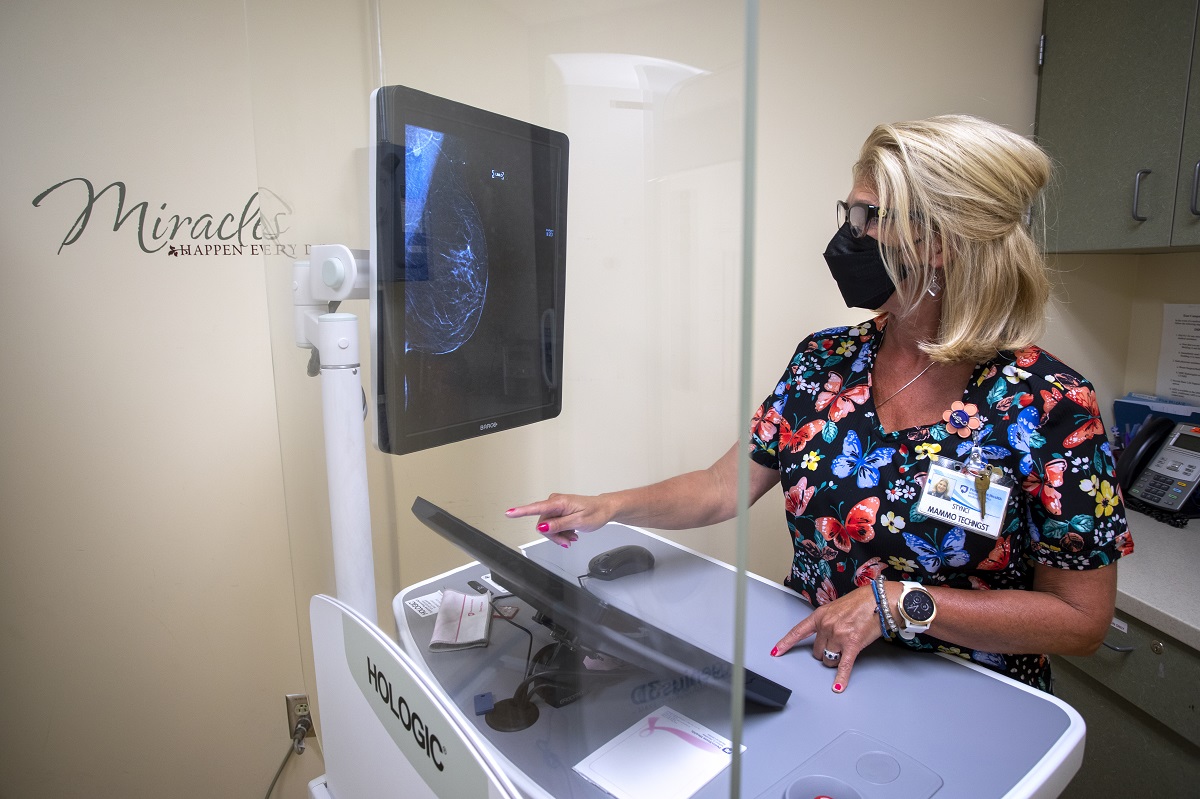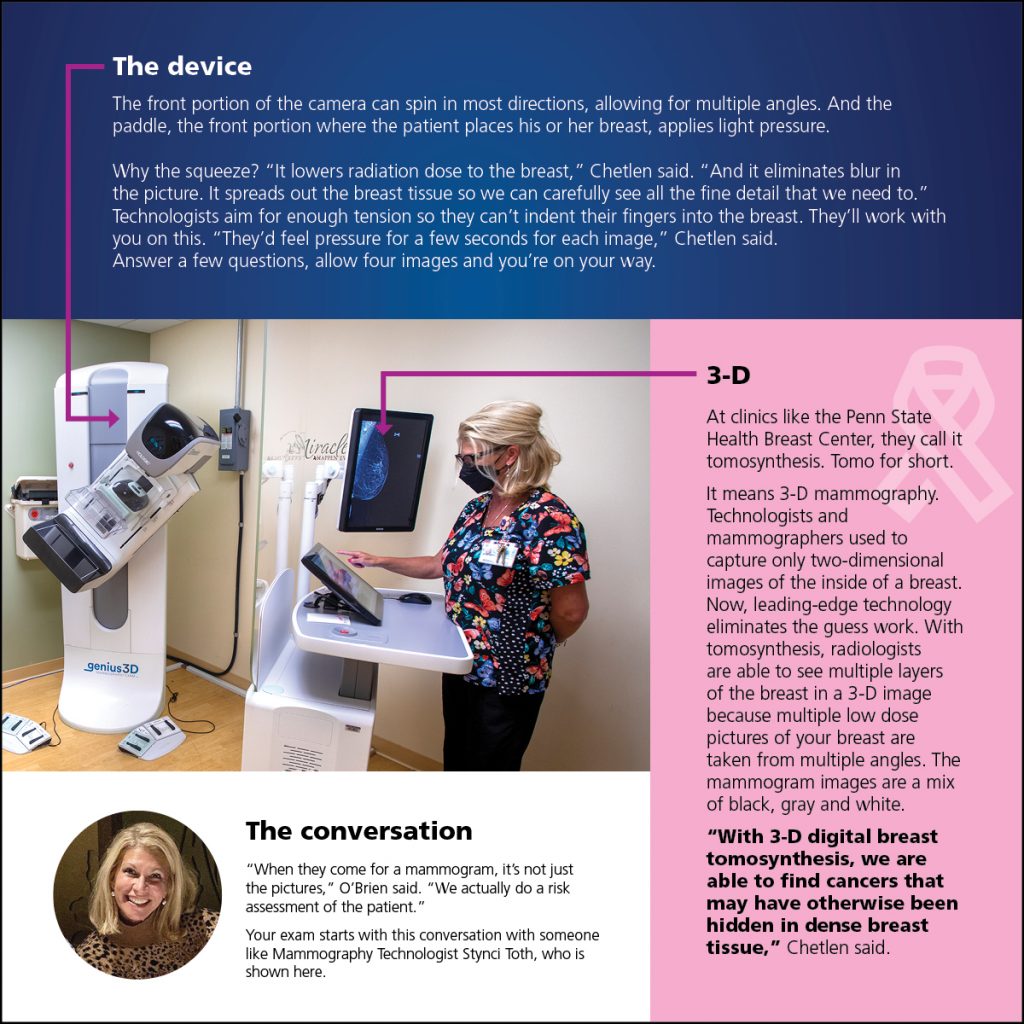The Medical Minute: What happens at a 3-D mammogram

Every day, Dr. Alison Chetlen works as a lookout to stop one of the planet’s most notorious killers. And her view keeps getting better.
Chetlen, a staff physician in general diagnostic radiology, and her colleagues at the Penn State Health Breast Center use state-of-the-art technology to root out the second most common cancer and cause of death among women in the U.S. Doctors diagnose about 264,000 cases of breast cancer in women in the U.S. every year, according to data from the U.S. Centers for Disease Control and Prevention, and 2,400 cases in men. The disease will kill 42,000 women and 500 men.
Early detection often can stop it, and that’s where Chetlen and her fellow mammographers and technologists come in. They have an arsenal of imaging tools and technology to find even the smallest cause for concern, but nothing bests the bellwether ― a tried and true annual mammogram.
“We have breast MRI, we have whole-breast ultrasound, we have a lot of supplemental imaging that we can use, but a mammogram will always be the gold standard for cancer detection,” said Lisa O’Brien, chief mammography technologist at the Center. “This will never go away. It’s here to stay.”
You hear the reminders every year. Women in their 40s begin regular screening. But technologists at the Center aren’t performing your mother’s mammogram. The images offer more sophisticated views of breast tissue than ever before.
“We’re able to find more cancers,” Chetlen said. “And we’re able to recall fewer women from screening mammogram because we can actually see through the breast tissue. Our patients can have increased confidence with 3-D mammography technology.”
But the mechanisms are still the same. The breast is compressed for a few seconds ― technologists work with you to make that as painless as possible. They take four photos. The entire exam ― from the opening consultation to “See you next year” ― takes about 10 minutes.
For the uninitiated, below is a look at the inside of a breast exam room and a little information about what’s in store for your first screening.
Related content:
- The Medical Minute: Mental health, overall wellness for breast cancer patients
- The Medical Minute: Deciding when to get that first mammogram
The Medical Minute is a weekly health news feature produced by Penn State Health. Articles feature the expertise of faculty, physicians and staff, and are designed to offer timely, relevant health information of interest to a broad audience.
If you're having trouble accessing this content, or would like it in another format, please email Penn State Health Marketing & Communications.

